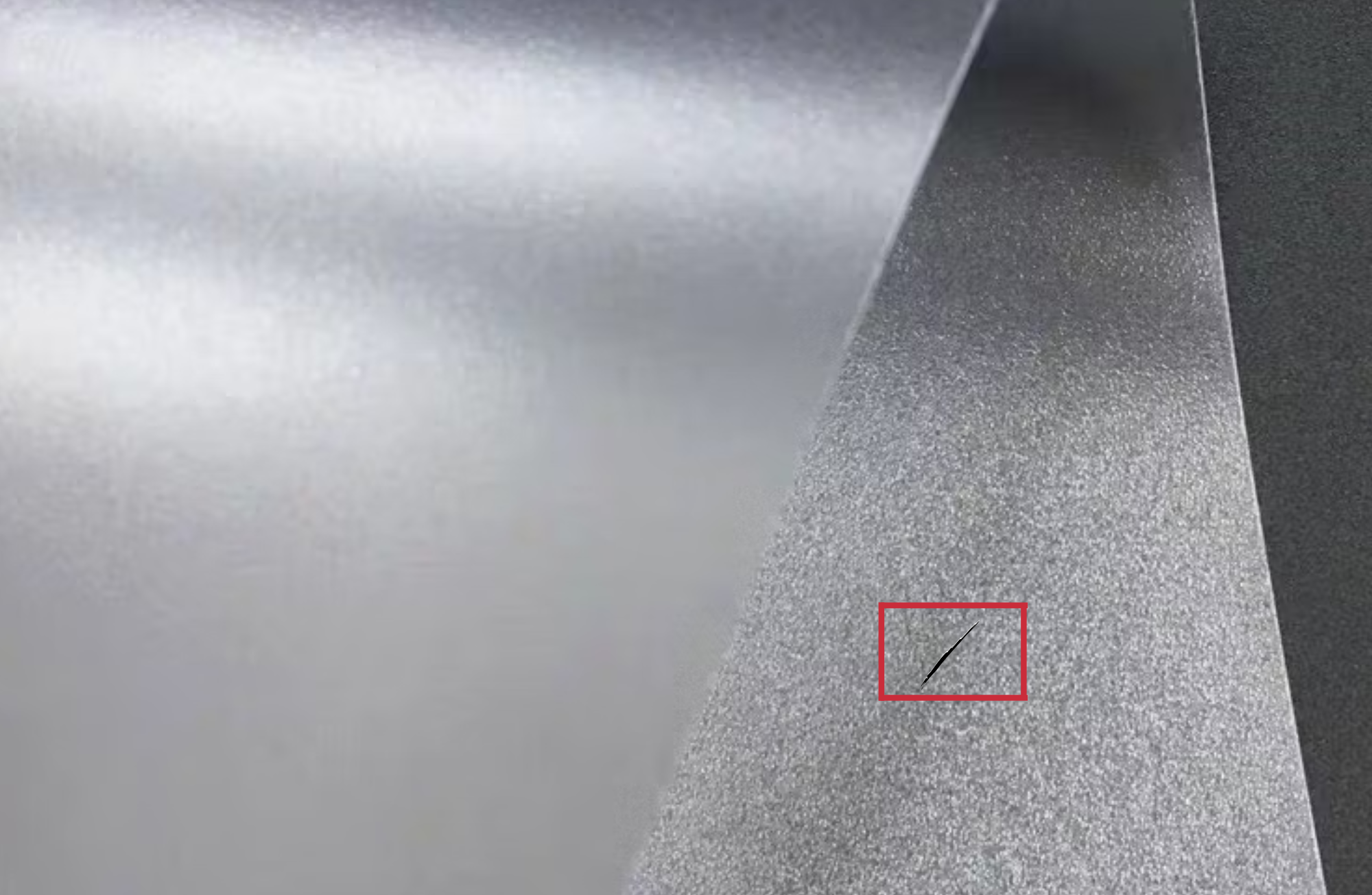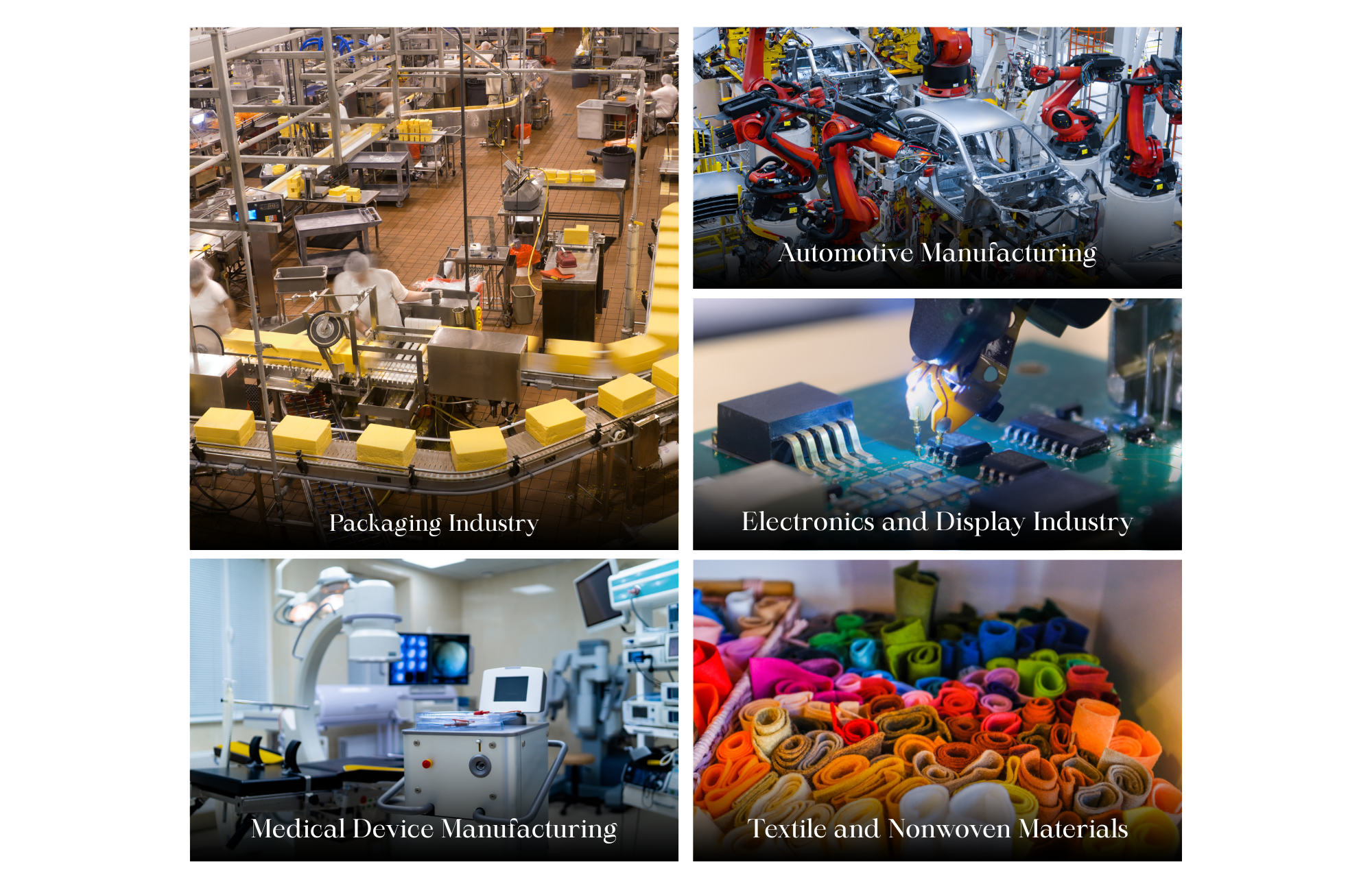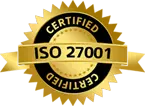Micron-Level Defect Detection in Translucent Plastic Sheets Using Machine Vision AI
Published on: May 08, 2025

Written by: Content team, Intelgic
Micron-Level Defect Detection in Translucent Plastic Sheets Using Machine Vision AI
In modern manufacturing, translucent plastic sheets have become indispensable across a wide range of industries. They are used in food and pharmaceutical packaging, medical films, lighting panels, optical diffusers, electronic displays, and protective barriers—where both visual clarity and structural integrity are critical. As demand grows for higher performance and flawless finishes, ensuring consistent quality across these sheets is more important than ever.
However, inspecting translucent plastics presents unique challenges. Their semi-transparent nature, internal light scattering, and subtle surface features make it difficult to identify defects such as micro-scratches, inclusions, bubbles, haze, or contamination streaks using traditional inspection methods. Manual checks are inconsistent, and basic machine vision often lacks the sensitivity required for fine defect detection on wide, fast-moving sheets.
This is where Machine Vision AI inspection technology steps in as a game-changer. By combining high-resolution line scan cameras, precision illumination, and real-time AI analysis, manufacturers can now detect and classify defects with micron-level accuracy, even at high production speeds. The result is not just better quality control, but a smarter, more reliable, and scalable manufacturing process.

Common Defects in Translucent Plastic Sheets
In the manufacturing of translucent plastic sheets, maintaining optical clarity, uniformity, and structural reliability is essential. These materials are often used in high-precision applications, where even the smallest flaw can affect functionality or visual quality. Despite advances in processing, a range of surface and internal defects can still occur during production, posing challenges to quality control.
Some of the most common defects include:
-
Gels and Inclusions: These are embedded foreign particles or unmelted resin clusters that form during extrusion or casting. They disrupt the uniform appearance of the sheet and may interfere with light transmission or cause mechanical weaknesses.
-
Bubbles or Voids: Air entrapment within the sheet creates visible or subsurface bubbles, which not only distort optical properties but may also reduce durability, particularly under mechanical stress or heat.
-
Scratches and Abrasions: Surface marks caused by handling equipment or friction during transport are often subtle but can scatter light and reduce the sheet’s visual quality—especially in lighting or display applications.
-
Haze or Cloudiness: Uneven light diffusion leads to a hazy or milky appearance. This may result from inconsistent cooling, resin blend issues, or internal stresses within the sheet, and can be a critical defect in applications requiring transparency.
-
Thickness Variation: Fluctuations in sheet thickness, often due to die misalignment or unstable processing conditions, can lead to performance inconsistencies, such as warping or stress points during downstream fabrication.
-
Contamination Streaks: Streaks caused by dust, degraded material, or resin inconsistencies often run along the length of the sheet and are highly visible under proper lighting, impacting both appearance and quality grading.
-
Edge Tears or Breaks: Mechanical defects like edge splits may develop during slitting or winding. These can compromise roll handling and may extend into the usable sheet area if not detected early.
Challenges in Inspecting Translucent Plastic Sheets
The inspection of translucent plastic sheets poses several technical and operational challenges:
-
Low contrast: Translucent materials scatter light, reducing the contrast between the defect and the background.
-
Large sheet width: Industrial sheets can be over two meters wide, requiring high-resolution scanning across a large area.
-
Micron-level precision: Defects as small as 10–50 microns must be reliably identified.
-
High-speed production: Inspection must keep up with fast-moving production lines, leaving no room for delay.
-
Lighting complexity: Standard lighting setups often fail to reveal internal or low-contrast surface defects.
-
Environmental factors: Vibrations, dust, and variable ambient light can affect inspection accuracy.
How Machine Vision AI Overcomes These Challenges
To effectively address the complexities of inspecting translucent plastic sheets, modern inspection systems integrate Machine Vision AI, line scan camera technology, and advanced illumination techniques. This combination of tools not only provides unmatched accuracy but also operates at the speed required for high-volume production, ensuring defect-free quality control throughout the process.
1. Line Scan Camera Technology for Micron-Level Defect Detection
-
Engineered for High-Speed Web Inspection: Line scan cameras are designed for continuous, high-speed inspection, making them ideal for large-format plastic sheet production.
-
One Line at a Time Capture: Unlike traditional area scan cameras that capture a full image at once, line scan cameras capture images one line at a time, synchronized with the movement of the plastic sheet. This ensures complete, uninterrupted coverage without gaps, even at high speeds.
-
High-Resolution Imaging: The cameras provide exceptional resolution, allowing them to detect micron-level defects ranging from 10 to 50 microns, such as:
-
Fine scratches
-
Subtle streaks
-
Surface imperfections
-
Minute inclusions
-
-
Longitudinal Defect Detection: Line scan technology is particularly effective for identifying longitudinal defects, such as scratches, streaks, and surface imperfections that run along the length of the sheet, which may be difficult to spot with traditional inspection methods.
-
Unmatched Precision for Wide Sheets: The ability to scan wide sheets while maintaining high clarity makes line scan cameras indispensable for translucent plastic sheet inspection, where other methods may miss fine details.
-
Ensures Consistent Quality Control: By detecting micron-range defects, line scan cameras guarantee consistent quality control, identifying even the smallest flaws that could compromise the final product.
2. Advanced Illumination Systems
Lighting is a critical element in inspecting translucent materials, as their semi-transparent nature often scatters light, making it difficult to identify subtle defects. Advanced illumination systems are customized to enhance the visibility of both surface and internal defects that would otherwise be nearly invisible under standard lighting. By using techniques such as coaxial lighting, dark-field lighting, and backlighting, these systems manipulate how light interacts with the sheet’s surface and internal structure.
-
Coaxial lighting ensures uniform illumination directly aligned with the camera, which helps to reveal surface defects like scratches and haze.
-
Dark-field lighting casts light at an angle, emphasizing irregularities like surface roughness or contamination.
-
Backlighting can highlight subsurface defects, such as inclusions or air pockets, that may disrupt the sheet’s transparency and optical properties.
-
The AI-powered system is constantly learning and evolving to adapt to new production conditions, ensuring that it stays accurate even as materials, processing methods, or environmental factors change. The result is rapid defect classification that can identify issues such as haze, micron-scale inclusions, and surface imperfections in real-time.
Furthermore, AI enhances the inspection process with:
-
Automated grading of defects based on their severity, providing immediate feedback on which defects are critical and which are minor.
-
Statistical defect mapping, which generates insights into production trends and identifies recurring issues, helping to optimize the manufacturing process.
-
Instant alerts for out-of-spec sheets, allowing operators to quickly identify and remove defective products, minimizing waste and reducing downtime on the production line.
-
By adjusting the lighting setup for specific defect types, manufacturers can uncover problems that might otherwise go undetected, even at the micron level.
3. AI-Powered Real-Time Analysis
The core advantage of using Machine Vision AI lies in its ability to analyze captured images in real time and automatically classify defects with exceptional accuracy. AI algorithms are trained on extensive datasets containing various defect types, allowing them to distinguish between true defects and harmless material variations. This enables the system to focus only on actual faults, preventing false positives that could waste time or resources.
The AI-powered system is constantly learning and evolving to adapt to new production conditions, ensuring that it stays accurate even as materials, processing methods, or environmental factors change. The result is rapid defect classification that can identify issues such as haze, micron-scale inclusions, and surface imperfections in real-time.
Furthermore, AI enhances the inspection process with:
-
Automated grading of defects based on their severity, providing immediate feedback on which defects are critical and which are minor.
-
Statistical defect mapping, which generates insights into production trends and identifies recurring issues, helping to optimize the manufacturing process.
-
Instant alerts for out-of-spec sheets, allowing operators to quickly identify and remove defective products, minimizing waste and reducing downtime on the production line.

Advantages of Machine Vision AI in Translucent Plastic Sheet Inspection
When it comes to inspecting translucent plastic sheets, Machine Vision AI delivers a powerful and reliable solution that surpasses the capabilities of traditional inspection systems. The unique optical properties of translucent materials—such as light scattering, partial transparency, and sensitivity to lighting conditions—pose significant challenges for manual or conventional vision-based quality control. Machine Vision AI addresses these challenges with the following advantages:
-
Real-Time, Automated Defect Detection
Machine Vision AI continuously monitors production lines and detects defects in real time. This eliminates the inconsistencies of manual inspection and allows manufacturers to respond instantly to issues like cloudiness, inclusions, or micro-scratches, ensuring consistent product quality across every meter of sheet produced. -
Micron-Level Precision and High Accuracy
With powerful AI algorithms and high-resolution imaging, the system can detect even the smallest defects—down to the 10–50 micron range. This level of precision is crucial in identifying subtle issues like micro-voids, gel particles, and ultra-fine scratches that may compromise optical clarity or mechanical properties in end-use applications. -
Continuous Learning and Adaptive Intelligence
AI-powered systems are trained on large datasets and continue to learn from new defect patterns over time. As production variables shift—such as raw material changes, environmental conditions, or equipment wear—the system adapts to maintain reliable detection, reducing the chances of false positives or missed defects. -
Enhanced Operational Efficiency and Cost Reduction
By automating the inspection process, Machine Vision AI significantly reduces labor costs and minimizes the need for post-production quality checks. Additionally, early defect detection reduces material waste, rework time, and costly machine downtime, thereby improving overall throughput.
Advanced Process Monitoring and Optimization
AI systems not only detect defects but also generate statistical defect maps and trend data. This helps quality engineers identify recurring issues, understand root causes, and adjust upstream processes proactively. The result is a closed-loop system for continuous process improvement.
Industrial Applications
Beyond translucent plastic sheets, Machine Vision AI plays a critical role in modern manufacturing across diverse industries by enhancing precision, consistency, and speed. Some of the key industrial applications include:
- Packaging Industry: In food, pharmaceutical, and cosmetic packaging, translucent and transparent plastic films must be free from voids, haze, creases, or print misalignments. AI-based inspection ensures these materials meet strict visual and barrier standards.
- Automotive Manufacturing: Translucent plastic components, such as light lenses, interior panels, and displays, require defect-free surfaces. AI vision systems detect surface imperfections, optical distortions, or molding inconsistencies, ensuring high product reliability.
- Electronics and Display Industry: For devices like touchscreens, light diffusers, and OLED panels, any defect in the translucent sheet can cause functional failure. AI enables the detection of subtle blemishes, ensuring the integrity of layers that affect light diffusion and visibility.
- Medical Device Manufacturing: In the production of translucent syringes, diagnostic containers, and fluidic components, AI inspection ensures clarity, sterility, and structural integrity, which are critical for regulatory compliance and patient safety.
- Textile and Nonwoven Materials: For specialty textiles and films used in cleanrooms, filtration, or PPE, machine vision ensures that microscopic tears, inclusions, or irregular patterns are identified before the product reaches end-users.

Intelgic: Expert Solution Provider in Machine Vision AI
Intelgic offers a state-of-the-art Live Vision AI inspection system, purpose-built for applications like translucent plastic sheet manufacturing. Combining line scan cameras, precision-engineered lighting setups, and Intelgic’s proprietary AI models, the system delivers:
-
Micron-level defect detection across full sheet width.
-
Adaptability to various translucent and semi-transparent materials.
-
Seamless integration with existing production lines.
-
Real-time analytics dashboard for actionable insights.
-
Continuous learning AI models customized to each manufacturer’s defect library.
In an industry where visual quality defines product success, relying on outdated or manual inspection methods is no longer viable. Machine vision AI, powered by high-resolution line scan imaging and sophisticated lighting, empowers manufacturers to detect even the smallest defects in translucent plastic sheets—accurately, consistently, and in real-time.
With Intelgic’s AI-driven inspection platform, manufacturers not only improve product quality but also gain efficiency, reduce waste, and future-proof their operations against rising quality demands. Whether you're producing films for electronics, medical packaging, or industrial applications, Intelgic delivers the precision and intelligence your process needs.

